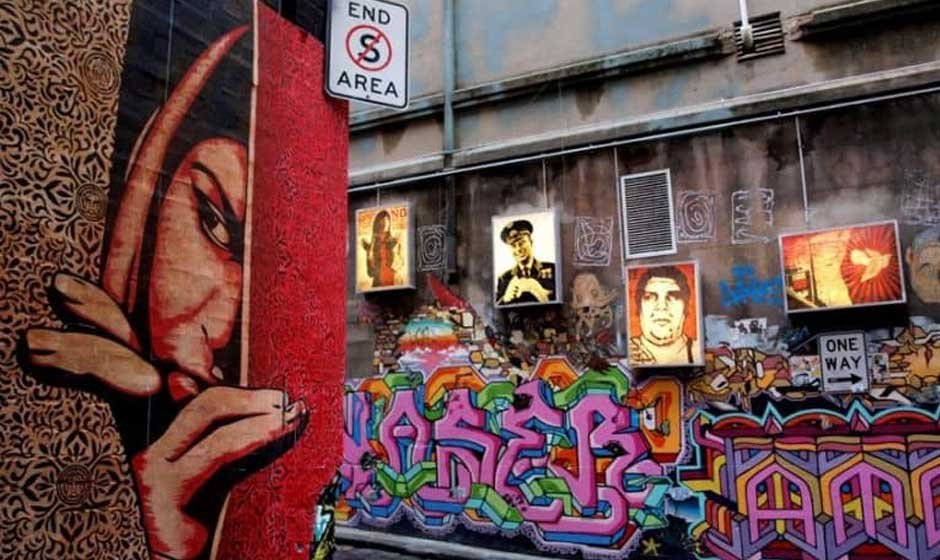I. Introduction
Lisha Bai stands out as a compelling figure in the contemporary art world. She’s known for her distinctive approach to sculpture, painting, and installation, where her work effortlessly transcends traditional boundaries.
Her creations invite viewers into a realm where the tangible qualities of materials, the vastness of space, and the nuances of perception beautifully converge. Bai’s artistic practice is marked by a meticulous exploration of diverse materials and a profound engagement with architectural forms.
This article aims to delve into her remarkable journey, examining the key influences that have shaped her unique artistic vision and the significant impact she has made on the broader art landscape.
II. Early Life and Artistic Foundation
Born in 1979, Lisha Bai’s artistic path began to unfold quite early in her life. These formative years were crucial, laying a solid groundwork for a career passionately dedicated to creative expression and intellectual inquiry.
Her academic pursuits further refined her innate artistic sensibilities. Bai earned her Bachelor of Fine Arts (BFA) from Washington University in 2001, followed by a Master of Fine Arts (MFA) in painting and printmaking from the prestigious Yale University. These institutions provided a robust foundation, exposing her to a rich tapestry of artistic theories and practices.
Her personal experiences, particularly growing up as a Korean American in Alabama, have subtly yet powerfully informed her artistic perspective. This rich and diverse background contributes significantly to the depth and nuance found within her body of work, reflecting a unique blend of cultural heritage and deeply personal narratives.
III. Artistic Style and Mediums
Lisha Bai’s artistic practice is profoundly rooted in her innovative exploration of materiality. She masterfully employs an incredibly diverse range of materials, from the delicate, ethereal textures of linen and taffeta to the robust, industrial qualities of plaster, resin, and steel.
In her paintings, Bai creates a truly captivating interplay of light, depth, and dimensionality. Works such as George’s Window and Joseph’s Room perfectly exemplify her remarkable ability to transform seemingly two-dimensional surfaces into immersive visual experiences. This is achieved through the careful juxtaposition of various fabrics and her masterful manipulation of light.
Her sculptures and installations seamlessly extend this material exploration into three-dimensional space. These works often culminate in immersive environments that powerfully engage the viewer’s spatial awareness. Pieces like Bonsai in the Window and the acclaimed exhibition After Hours vividly demonstrate her keen understanding of how light and form interact to define and redefine space.
Across her varied mediums, Bai consistently delves into compelling themes of illusionism, the intricate manipulation of light and pictorial space, and the inherent qualities of architectural forms. Her art consistently invites contemplation on the fluid and often blurred boundaries between art itself and its surrounding environment.
IV. Notable Works and Exhibitions
Lisha Bai’s compelling work has been showcased in numerous prestigious galleries and exhibitions, firmly solidifying her well-deserved reputation in the contemporary art scene. Her exhibitions have graced notable venues such as DC Moore, Halsey McKay, Klaus von Nichtssagend, and the Fortnight Institute.
Deanna Evans Projects has also served as a significant platform for her groundbreaking work, notably featuring her exhibition After Hours. Her textile piece, Joseph’s Room, which made its debut in New York City in December 2023, stands as a poignant example of her ability to intricately weave personal narrative into her art, drawing profound inspiration from her experiences as a Korean American growing up in Alabama.
Another highly notable work is 3.11.20, a piece meticulously crafted from cast sand, which powerfully demonstrates her remarkable versatility and innovative use of unconventional materials. Her active participation in significant events like NADA Miami further underscores her prominent presence and growing recognition within the dynamic art market.
V. Personal Life and Influences
Beyond her significant artistic endeavors, Lisha Bai is also recognized for her marriage to actor Peter Scanavino, widely known for his role in Law & Order: SVU. While the couple consciously maintains a relatively private life, Scanavino has consistently and openly expressed his profound admiration and unwavering support for Bai’s distinguished artistic career.
Her personal background, particularly her unique experiences as a Korean American raised in Alabama, has subtly yet profoundly influenced her artistic output. This distinctive blend of cultural heritage and deeply personal history enriches her work, providing a deeper layer of meaning and fostering a stronger connection for viewers.
Bai’s unwavering dedication to her craft is strikingly evident in the consistent quality and thoughtful execution of each of her pieces. Her passion for art is clearly not merely a profession; it is a fundamental and integral aspect of her very identity, relentlessly driving her continuous exploration and groundbreaking innovation.
VI. Lisha Bai’s Impact on Contemporary Art
Lisha Bai stands as a truly significant voice in contemporary art, consistently pushing the very boundaries of sculptural expression and spatial aesthetics. Her innovative use of industrial materials, combined with a keen sensitivity to spatial dynamics, offers viewers a profound and often transformative engagement with their surroundings.
Her work not only challenges conventional notions of sculpture but also actively invites deeper reflection on the intricate interplay between art, architecture, and perception. Bai’s substantial contributions to the art world promise to continually inspire and provoke thought, thereby shaping the ongoing dialogue around spatial aesthetics in the 21st century.
VII. Conclusion
In conclusion, Lisha Bai’s artistic journey serves as a powerful testament to the transformative power of materiality and space within contemporary art. From her solid academic foundations at Washington University and Yale to her compelling exhibitions in renowned galleries, Bai has consistently demonstrated a unique artistic vision and an unwavering dedication to her craft.
Her remarkable ability to seamlessly blend personal narratives with universal themes, all while utilizing a diverse range of mediums and materials, truly sets her apart. Lisha Bai’s lasting legacy will undoubtedly be her profound impact on how we perceive and interact with art, firmly solidifying her place as a pivotal figure in the ongoing evolution of contemporary artistic expression.













